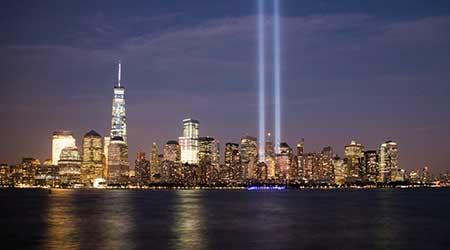
How Have Buildings Changed Since 9/11?
September 11, 2019
Today, we commemorate the 18th anniversary of the attacks of 9/11, and remember all those who lost their lives. That horrific day was not only a turning point geopolitically and in the war on terror, it was also a catalyst for change in how high-rise buildings are designed, built, and operated.
Partly as a result of the 9/11 Commission Report on the engineering, emergency preparedness, and safety concerns regarding evacuations, and partly based on recommendations from the National Institute of Standards and Technology (NIST), the industry as a whole has gotten much smarter about building safer buildings. Many of these changes have made their way into codes, like elevators being required in buildings higher than 120 feet and much more robust fire safety standards for materials. This article in Fire Engineering gives a good round-up of many of these construction-related changes to code.
As well, emergency communication and evacuation procedures have undergone dramatic changes in the years since 9/11. One of the biggest tragedies during the 9/11 attacks themselves was that in the World Trade Center, when it looked as if the buildings' collapse was imminent, a breakdown in communication between police, firefighters, and building staff, many of whom we’re either still rushing into the building, or rushing to the top floors, broke down. This lack of warning caused many to be trapped in the building, losing their lives. Procedures for communication during an emergency, as well as evacuation procedures, have evolved. Most notably, in many buildings, though they’re still subject to strict codes and inspection schedules, elevators can be used for evacuation in case of a fire. This is a stark contrast to the historical notion that occupants should always use the stairs.
Perhaps no building more encompasses the spirit of post-9/11 changes than the One World Trade Center, the high-rise building that rose on the site of the former World Trade Center buildings. Dozens of additional safety and security features were added to the design of this building, the tallest in New York City. Those include its signature 185-foot concrete base, which is designed to prevent truck and other street-level bombings, extra wide stairwells with reinforced concrete, and a concrete core, among many others. The building is literally designed “to withstand a 9/11-type attack,” according to CNBC.
This post was submitted by Greg Zimmerman, executive editor, Building Operating Management and FacilitiesNet.com. Read his cover story about Chris Walinski and his mission to make open offices flexible and productive.
Next
Read next on FacilitiesNet












